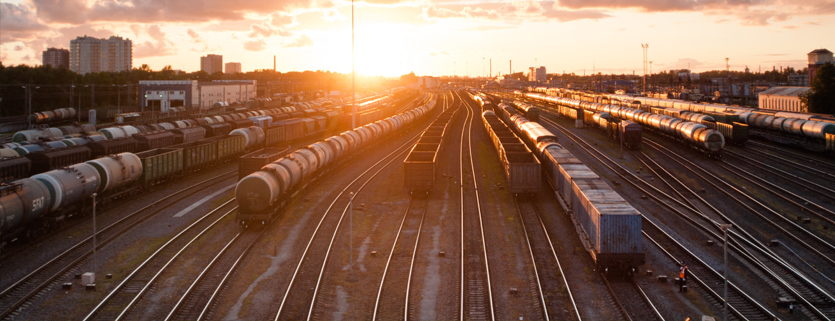LNG on rails – networking fuel
European railway has been a history of steady decline – apart from a couple of superstar routes. But the European railway network is also historically super developed. That might be a boon for LNG distribution.
One of the big drawbacks of onshore LNG distribution is the price of long-distance transport. Pipelines are not practical as LNG is a boiling liquid and hence does not lend itself easily to pumping through a steel tube. Boil-Off Gas (BOG) is produced constantly and thus the volume of methane expands to about 600 times its liquid volume which increases pressure in the line.
Smart engineers have come up with solutions for this problem (frankly, is there something engineers won’t solve if money is no issue?) but this comes at a price.
So LNG will have to be transported in lumps. Standardised cargos of LNG that zip zap to wherever it is needed most. That at least is the theory. Then comes road transport with lots of weight limits (on European roads at least), expensive and restive drivers (and their unions), fuel cost and weekend driving limits and soon you are at the point of total mental trash.
Road transport might offer ultimate flexibility as one can easily bring anything just about anywhere but when that flexibility is not even needed it comes at a horrendous price. Anyone who has calculated a small scale LNG project once in his life will remember the shock about what logistics cost you and if its only for a few kilometers. Imagine what transporting LNG over several hundred or even a thousand kilometers might cost.
I always argued that the future of LNG lies in network like distribution. The main difference between a network model and point to point transport is that the network is a loose system of different nodal points between which lumps of whatever (in our case LNG) zip zap around. These nodal points supply smaller satellite distributors which in turn are the backbone of the supply system.
The network is there and needs very little upgrading. Costs for transport would be minimal compared to the road version. Together with a smart form of fluvial LNG transport the old rail tracks of Europe might well be the foundation of a new energy architecture of the continent.
Let’s talk openly – there were always smarter ways to use our regasification terminals than just converting LNG into gas and squeezing it with all the other gas into a pipeline. But monopolies don’t care about more efficient use of what they have – it needed a liberalized energy and transport world in order to crack concrete skulls open and allow for something new.
In a sense, modern airline travel has evolved like this. Big airline hubs are connected through long-haul carriers that bring large volumes of people (the passengers) from one hub to another distant hub. That enables them to use much larger gear (Jumbo Jets would not make sense in the regional league) and hence save money through economies of scale. Then the regional distributors take over and either bring in passengers from the farther-flung out locations to the hub or from the hub to their destination on backyard island.
Another analogy would be the internet (and frankly – for me, it’s even more compelling). At the core, the internet is a tie-up of a bunch of servers in various locations which communicate with each other through a uniform language (let’s call it uniform standards) called HTTP. HTTP is a protocol that (in a simplified form – true internet evangelists please don’t crucify me now if I omit a detail) takes data – any kind of data – and hacks it in uniform pieces (lumps or packets), gives each of them an ID tag, an address by which the receiving end will instantly recognize it when it buzzes in and then broad bands it onto the world wide web.
Each data lump is essentially free to search by itself for the most effective and economical way to reach its destiny. And as the info is broadband, it does not matter if certain lumps don’t reach their destination as others will jump in and take the slack.
If we translate this analogy to road transport we have a problem. Each lump of road transported LNG needs a lot of intelligence as it absolutely needs to get where it was intended to go. Drivers will take care that this happens. This assures that a particular lump gets where it is needed but its systemically not very flexible. And it is very, very expensive as intelligence costs money, a lot more money than the commodity itself in some instances.
Rail is a much better system as once the LNG is on the iron horses wagons, it can simply be left to the railway companies logistical services. They will configure trains in order to fulfill whatever transport contract they have at the time. It matters very little if a given train pulls one, two or more wagons more or less each time as the additional effort of the whole train per wagon is negligible.
That alone makes rail a perfect medium for big bulk transport as you only need to load the wagons (the lumps) and then give them tags, leaving them to the railway operator in the process. The railway operator needs very little knowledge about the freight, the source or the destination as after loading the lump is identical with many other lumps which can then be configured and reconfigured almost at will.
Well, let’s pull back a little as there are a number of factors that need consideration like for example, LNG is still a boiling liquid and produces BOG but lumpy cargoes produce much less BOG than a pipeline as thermal influx in a vacuum insulated tank is much less. Hence less of a BOG problem. Besides, modern vacuum tanks are pressure resistant to a certain point. They will take many days and even weeks of BOG buildup until there is a real problem. Simple pressure gauges on each tank connected to the mobile communication network will enable operators in control rooms to planning accordingly and automated bells and whistles systems will be here to drive lazy operators nuts to avoid problems at an early phase.
But, you will say now, that’s still not very good as I need the LNG here and there is no railway here. That’s where another system the European Commission is very keen on comes into play. Anyone who has tried to transport containers in Europe must already have stumbled over the term “intermodal transport”. Simplified speaking this means that standard containers are lifted from a truck onto a special rail container carriage and then the container uses cheap rail transport just in order to be picked up by another truck at the destination intermodal node.
Standard LNG transport containers already exist and there is no reason why they should not be lifted onto a rail carriage for long-range transport. But going one step further, a rail loading facility at the LNG terminal would do away with the need for the first truck altogether. And for most terminals, it would be a modest investment given what potential market lies on their doorstep.
At the destination, there is a lot of dead tracks. Many railway stations don’t need much of their track anymore so it just lies there and rusting away. Some of those unused tracks could be refurbished inexpensively and become satellite nodal points for the redistribution of LNG. They could be some sort of super gas station for fleet vehicles and smaller LNG transport trailers wanting to go the last mile. That would give much-needed business to ailing railway companies and would give the unbundled companies who own the rails something to improve their business plans on.
And let’s be frank, with all the historically unused tracks in Europe, this is an energy internet par excellence. I would not be surprised if some old unused tracks would be dusted off and revitalized bringing many communities back to the railways.











Leave a Reply
Want to join the discussion?Feel free to contribute!